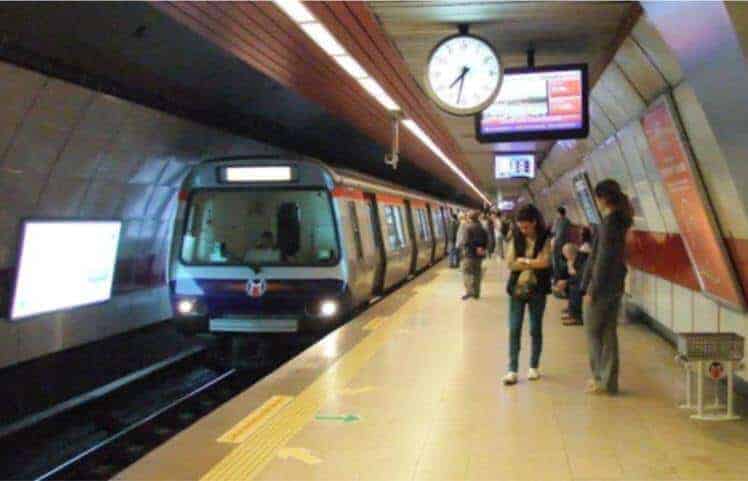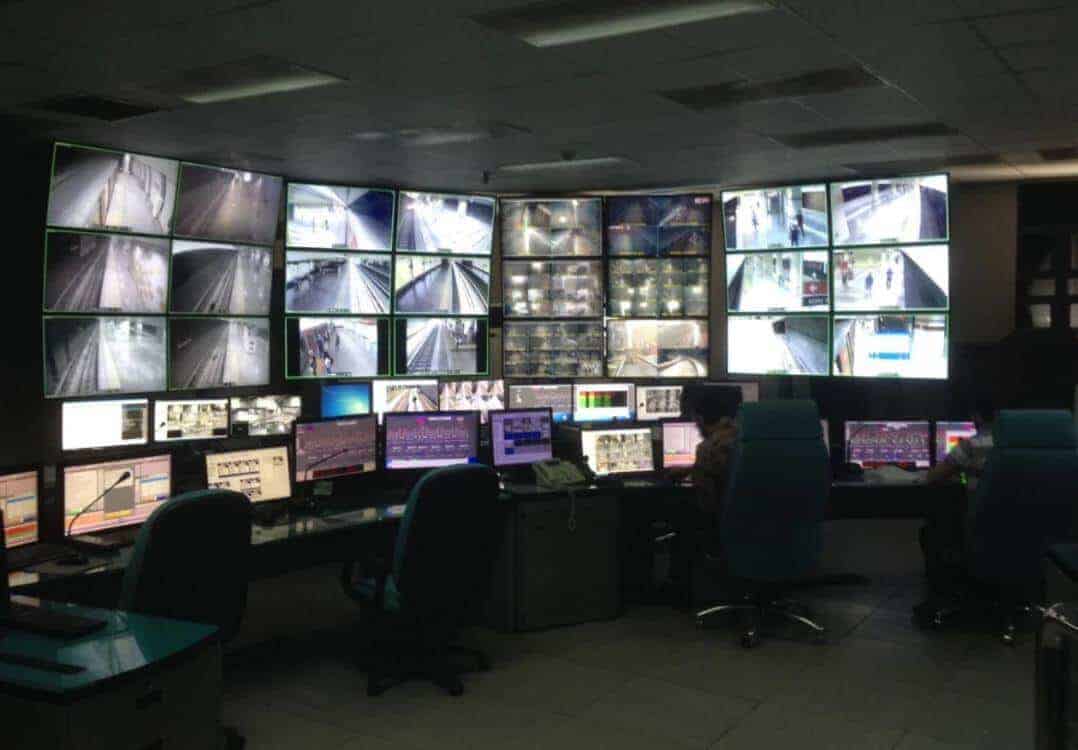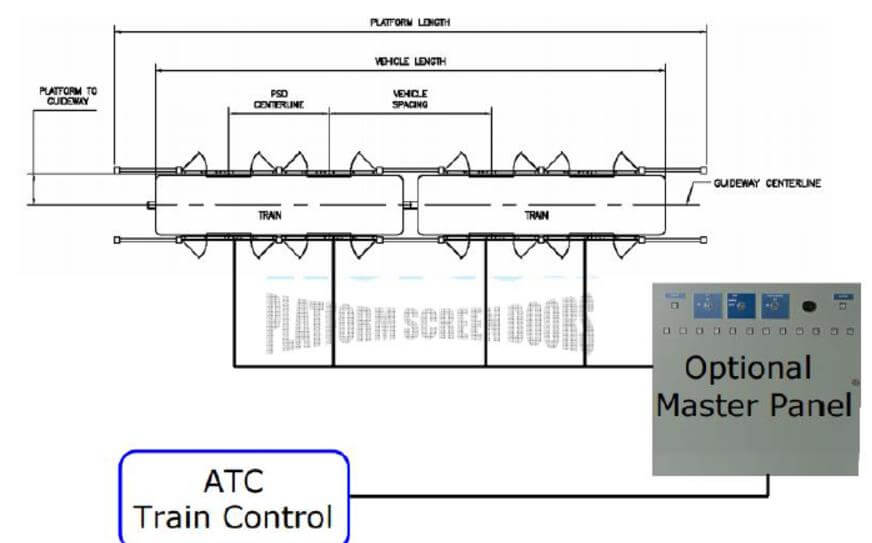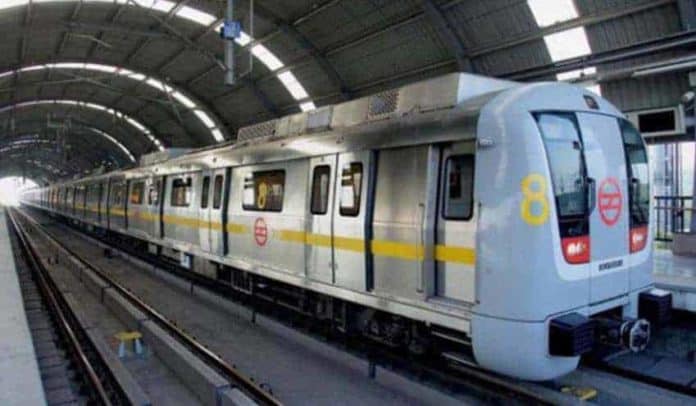Investigations of metro stations security systems and implementation of platform screen doors.
Abstract: Metro systems have become the most preferred transportation systems in the metropolises by the means of their speed, transportation capacity, reliability and comfort. This systems have platform screen doors on the platform lines to prevent passengers from passing to the rail line, disabled passengers from falling to the rail line, to reduce the effect of the wind on the passengers created by the high speed air before the metro.
With the significant increase in passengers using the subway line and in direct proportion to that increasing suicide and falling events have brought forward the needs of safety precautions. For that purpose, the operation principles and advantages of platform screen doors have been examined.
Introduction: Recent events in suburban stations in major cities security in our country.The need to increase the measures in the foreground. Train passengers with subway platform door systems.Obstruction of passage of passengers with disabilities, preventing passengers with disabilities from falling on the train line, Reducing the effect of high-speed air on the passenger in front of the train entering the station It is aimed. These doors can be of different size and type. Some types completely between tunnel and station While some types are crying off at certain times.
There is no obstacle between the passenger waiting area and the train line in the station shown in Figure 1.
In this study, the necessity of platform door systems is considered.
 Figure 1. A view from Istanbul Bahcelievler metro station
Figure 1. A view from Istanbul Bahcelievler metro station
2. Metro Stations Security Systems
The main objective of safety practices: By improving the level of real and perceived security, ensuring that passengers and their staff are in peace and security.
The security systems at the metro stations consist of three main components
2.1. Human complaint
There are officially uniformed security officers in the tourniquet areas of the stations holding spot watches, while passengers are open and security officers serving patrols in other areas. Flammable, flammable, explosive, etc. according to passenger transport regulations. Since it is forbidden to enter the stations and vehicles, security personnel, detectors, upper search, bag and package control are done. Stations have security officers serving as officers, as well as officially uniformed security officers. In emergencies, security staff as well as other personnel (station supervisors, maintenance crews, cleaning staff, etc.) at stations are responsible for checking they are in the area.
2.2. Technical Elements
Camera and alarm systems and other security systems are monitored 24 hours a day in real time with technology-enabled cameras in all public areas of the stations.
 Figure 2: Monitoring of stations by the control center
Figure 2: Monitoring of stations by the control center
2.3. Physical Security
Entries for public areas are made with a magnetic card and the system does not allow for unauthorized access and the relevant personnel warns them visually and audibly. The metro lines also include walls, wire braids, barriers, turnstiles and lighting systems.
- Security Vulnerabilities at Metro Stations
Today, subway systems are based on passenger safety. However, the absence of any obstacle between the train line and the passenger waiting point poses various problems.
Mortal and injured accidents arising from various suicide and fall cases in metro stations have recently come to the fore. These events have led to the necessity of taking measures between the train line and the passenger waiting point at the metro stations.
4. Platform Screen Door Systems
Metro Platform Door (PSD) systems can be applied to subway and light rail systems. The PSD is a security device that separates the platform area from the rail tunnel by a fixed wall (partition) and sliding doors. When the electric train stops at the pre-determined location, the signaling system enables the compartment doors to open at the same time as the car doors. Through the application of the automatic train control system (ATC) and state-of-the-art technology, not only does it ensure the safety of the passengers, but also the cause of the platform train. It provides a comfortable underground travel and driving experience by providing wind, dirt and dust, chestnut protection, heating and cooling efficiency.
Figure 3. Overview of the platform door system
4.1 Types of Platform Screen Door Systems
These systems are produced in 3 different types as shown in Figure 4
 Figure 5. (1) Full Platform Door System, (2) Semi Platform Door System, (3) Platform Gate System
Figure 5. (1) Full Platform Door System, (2) Semi Platform Door System, (3) Platform Gate System
4.1.1 Full Platform Door System
The division covers the entire platform. With the train line, the passenger completely closes the waiting area. It works synchronously with the train doors. In emergencies, doors can operate independently. They absorb the air current that the trains have created to a large extent. It provides economic comfort in the station.
4.1.2 Semi Platform Door System
The platform has a height of 2.30m and 2.50m. It provides security between the train line and the waiting area. It works synchronously with the train doors. In emergencies, doors can operate independently.
4.1.3 Platform Gate System
The platform has a height of 1.30m and a height of 1.50m. Provides free air flow at ventilation angle. Setup and strengthening efforts are easier than others. It works synchronously with the train. In emergencies, doors can operate independently.
4.2 Principles of Platform Doors
Platform door systems have also been designed to improve station comfort while offering the ability to block access. The platform façade is designed to cover at least the length of the train and the entire length. When the vehicle is stationary, active sliding door (ASD) modules ensure that the vehicle doors and platform doors are aligned. Each active sliding door (ASD) consists of double doors surrounded by automatic double wing fixed glass panels. Emergency exit doors are specified on fixed panels.
Each active sliding door module is separated by a platform between the line and the floor. The operating equipment is located in an enclosed enclosure accessible via the use of a personnel key. A typical control system includes a structure with a door control unit and a general platform control (DCU) on each. Each DCU profile includes a user-defined microcontroller that controls door movement. In case of any malfunction, a report is automatically prepared and the station is sent to the monitoring network.
 Figure 5. Platform door system control mechanism
Figure 5. Platform door system control mechanism
4.3 Advantages of Platform Door Systems
4.3.1. Enhanced Security
It divides the platform into two parts and provides protection from trains in motion.
4.3.2. Extra Convenience
Avoiding the pressure wave of passengers, the air conditioners in the station work more efficiently, providing information and advertisement areas.
4.3.3. Speed
Effective control of pedestrian flow is ensured, train travel times are reduced, time between incoming trains is shortened and system capacity is increased.
4.3.4. Higher Economic Efficiency
Low energy costs and accidents result in loss of material losses, allowing full platform width to be used.
4.3.5. Enhanced Aesthetics
Unlimited interior design possibilities, color and material options.
5. Conclusions
In this study, the contribution of the Platform Screen Doors (PSD) used in subway stations to passenger safety in underground transportation systems is examined. Platform door systems and advantages that can be applied in the work done have been shown.
It has been determined that accident or suicide attempts that may occur with the platform door systems can be avoided. In addition, sudden pressures experienced by passengers can be avoided and comfort can be improved.
References
[1] Eskin N. ,Gür M. ,Büyükşirin O. ,Altıntaş Ü. ,Yedikardeş Y. Istanbul Technical University, Effect of platform separating doors on indoor conditions in a subway station, 12th National Plumbing Engineering Congress, 2015
[2] Istanbul Ulaşım A.Ş. Passenger safety data, 2016
[3] Westinghouse Platform Screen Doors, knorr-bremse, 2000
[4] Metro Platform Doors, HMF elevator, 2010
[5] Horton Automatics Platform Screen Doors, Horton Automatics, 2007


